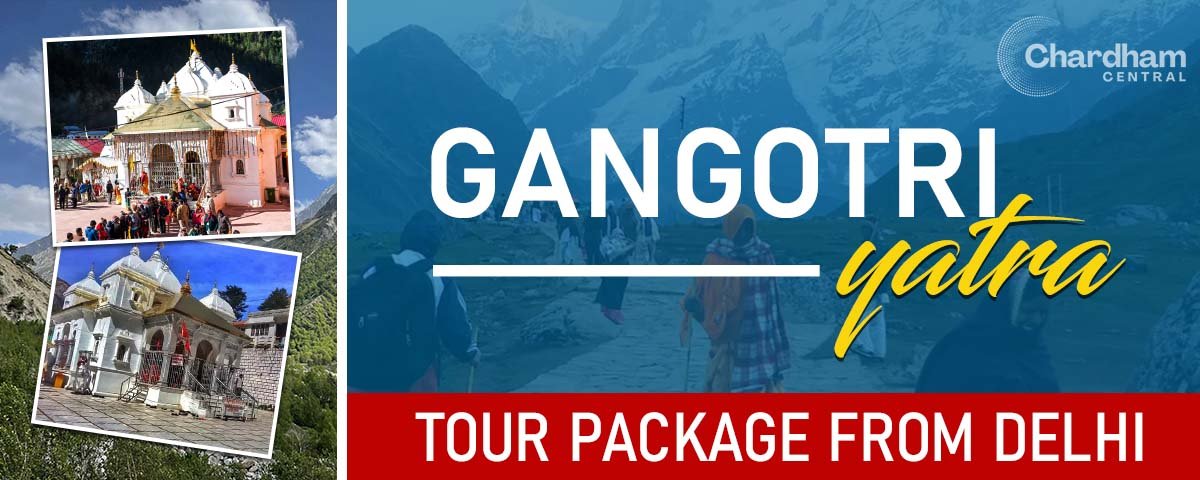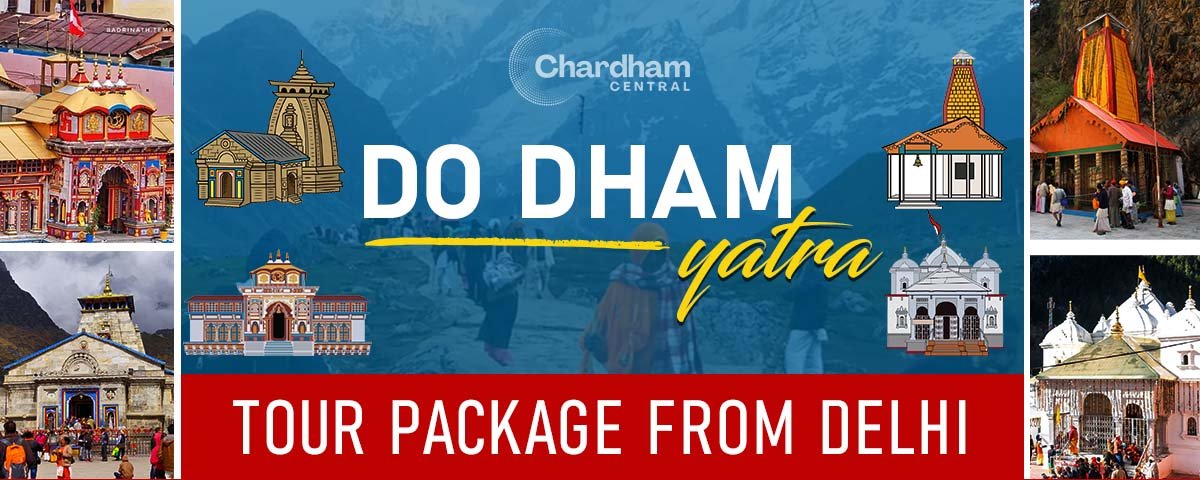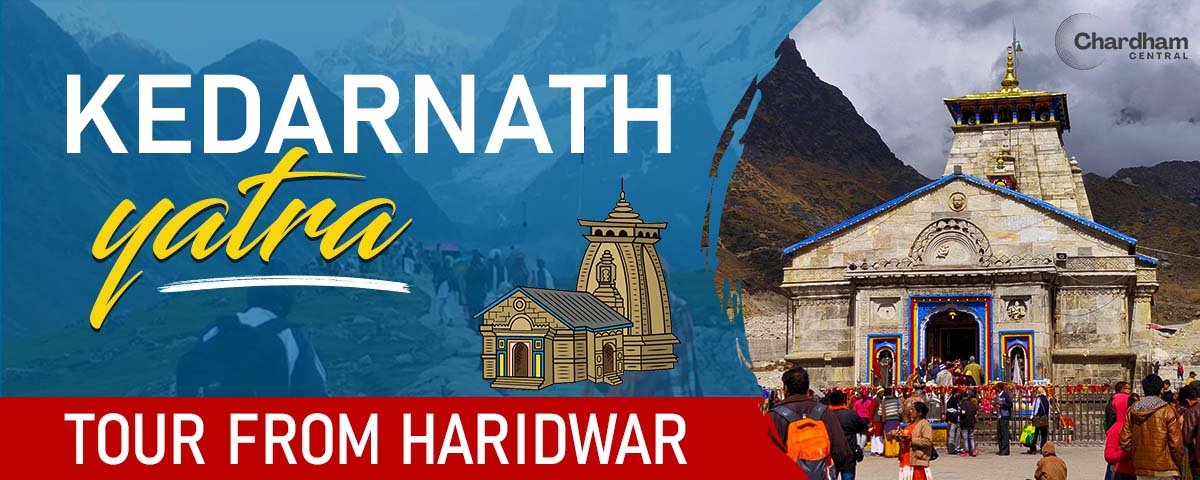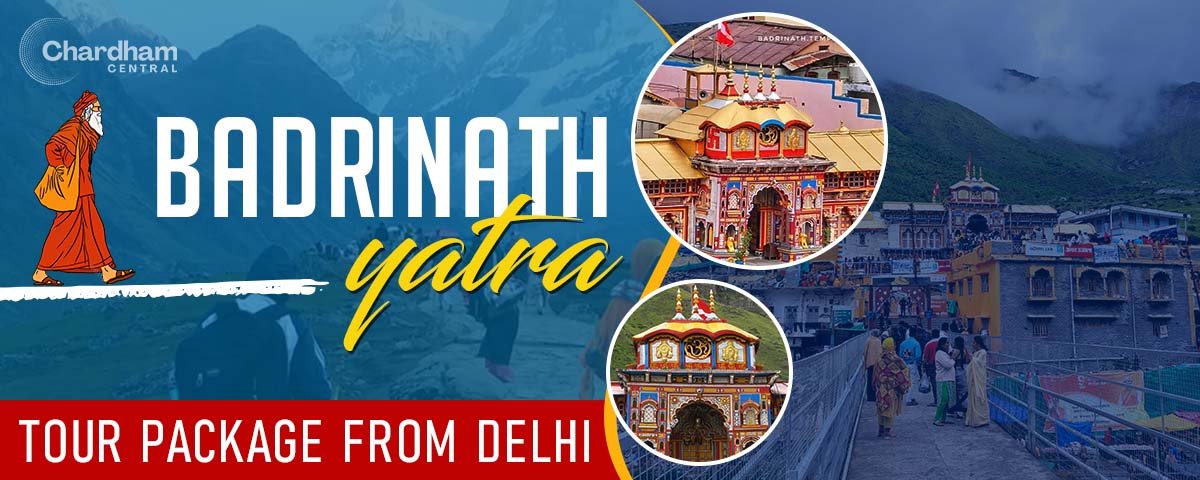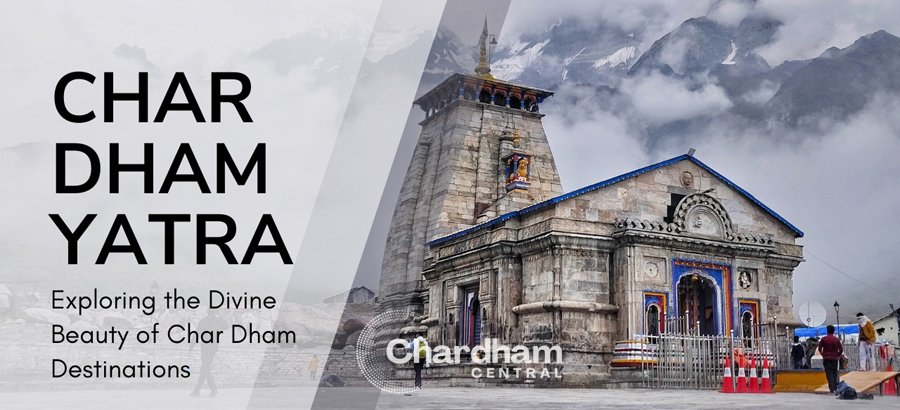
Kedarnath Temple
Kedarnath Temple is a sacred Hindu temple dedicated to Lord Shiva, located in the Garhwal Himalayas near the banks of the Mandakini River in Uttarakhand’s Rudraprayag district. The temple is situated at an altitude of around 3,583 meters (11,755 feet), surrounded by snow-capped peaks and a tranquil natural landscape that adds to its spiritual charm. Kedarnath Dham is one of the Char Dham sites in Uttarakhand, holding great religious significance and drawing thousands of devotees every year who come to seek blessings in this divine Himalayan setting.
Kedarnath Temple History
According to legends, Kedarnath Temple was originally built by the Pandavas, who came here to pray to Lord Shiva and ask for forgiveness after the Kurukshetra war. The current temple structure was revived in the 8th century CE by Adi Shankaracharya. Located in a region prone to landslides and floods, this ancient temple has survived many natural disasters. One of the most powerful moments in Kedarnath Temple history was during the 2013 floods. While much of the area around the temple was destroyed, the temple itself remained safe. A huge boulder, now known as Bhim Shila, came to rest behind the shrine and acted like a shield, protecting it from the strong floodwaters. Today, Bhim Shila is worshipped as a symbol of divine protection and strength.
Mythology Legends Associated with Kedarnath Temple
As per Hindu mythology, Kedarnath real story is linked to the Mahabharata. After winning the Kurukshetra war, the Pandavas felt guilty for killing their own family members and wanted to seek forgiveness from Lord Shiva. But Lord Shiva did not want to meet them, so he disguised himself as a bull and hid in the Kedarnath region.
When the Pandavas tried to catch him, he disappeared into the ground, leaving behind only his hump, which is now worshipped at Kedarnath Temple. It is believed that other parts of Lord Shiva’s body appeared at four other places his arms at Tungnath, face at Rudranath, stomach at Madhmaheshwar, and hair at Kalpeshwar. These five places together are called Panch Kedar, and all are important temples dedicated to Lord Shiva.
Significance of Kedarnath Temple
Kedarnath Temple is one of the holiest shrines dedicated to Lord Shiva. It holds a prominent place as part of the Char Dham Yatra and Panch Kedar in Uttarakhand, and is also one of the twelve Jyotirlingas of Lord Shiva in India. Every year, lakhs of devotees undertake the challenging journey to Kedarnath to seek the blessings of Lord Shiva and to attain moksha (liberation) and salvation. Kedarnath is the highest Jyotirlinga in India, which makes it very special both spiritually and geographically. Its peaceful location in the Himalayas adds to its sacred feel, drawing not only devotees but also spiritual seekers and nature lovers.
Architecture and Design of Kedarnath Temple
Kedarnath Temple Architecture is a remarkable example of ancient stone architecture and spiritual devotion. Originally built by the Pandavas and later renovated by Adi Shankaracharya in the 8th century, the temple is constructed using massive interlocking stone blocks without mortar, enough to survive the tough weather in the Himalayas for hundreds of years.
The Kedarnath Temple inside includes two main parts: the Garbha Griha (sanctum), where a naturally formed conical rock symbolizes Lord Shiva in his Sadashiva form, and the Mandap, where devotees gather for darshan. The walls feature carvings of deities, and a metal idol called the Utsava Murti, used in processions, is also placed inside. The temple stands on a raised stone platform and is reached by wide steps. At the entrance, there is a big statue of Nandi, Lord Shiva’s sacred bull, who stands as his loyal guardian, protecting the temple and welcoming devotees.
Deity and Rituals at Kedarnath Temple
Kedarnath Temple is dedicated to Lord Shiva, who is worshipped here in the form of a natural stone lingam, believed to be the hump of Lord Shiva in his Sadashiva form. Kedarnath Dham is one of the Char Dham sites in Uttarakhand and one of the twelve Jyotirlingas in India which holds great spiritual importance. The rituals at Kedarnath include daily prayers, Abhishekam (sacred bathing of the lingam), Rudrabhishek, and decoration of the Shivling with flowers and holy ash. The temple priests, known as Rawals, come from Veerashaiva community in Karnataka and follow ancient traditions. Kedarnath Temple is open to devotees only for six months each year, from April/May to October/November. During the winter months, when the temple is closed due to heavy snowfall, the deity is shifted to Ukhimath, where worship continues.
Seasonal Opening & Closing of Kedarnath Temple
Kedarnath Temple opens every year in late April or early May, marking the start of the pilgrimage season. The Kedarnath Temple opening date is announced annually on the occasion of Maha Shivratri by the priests of Omkareshwar Temple in Ukhimath. The Kedarnath Temple Opening Date 2025 is expected to be in the first week of May, though the exact date will be confirmed closer to the time.
The temple remains open for about six months and closes around mid-November, usually after the festival of Bhai Dooj. During the winter, due to heavy snowfall and extreme weather, the temple becomes inaccessible. The idol of Lord Shiva is then moved to Ukhimath, where it is worshipped until the temple reopens the following spring.
Location and Route to Kedarnath Temple
Kedarnath Temple is located in the Rudraprayag district of Uttarakhand, nestled high in the Himalayas. The nearest base for the trek is Gaurikund, approximately 18 to 20 kilometers from the temple. From Gaurikund, pilgrims begin on a scenic yet challenging trek through mountain trails surrounded by forests and rivers. The route includes stone steps and uneven paths, requiring moderate physical effort.
Vehicles cannot reach the Kedarnath temple directly, but shared jeeps are available up to Gaurikund. From there, pilgrims can choose to trek, hire ponies or palkis (porters), or opt for helicopter shuttle services from phata and nearby helipads for a faster and easier journey to Kedarnath.
Dress Code and Etiquette at Kedarnath Temple
While there is no strict Kedarnath Temple dress code, pilgrims are advised to dress modestly, as it is a sacred and holy site. Women should avoid wearing short or revealing clothes and instead opt for full-length traditional or comfortable attire. Devotees are also expected to follow temple guidelines, such as maintaining silence in the sanctum area and respecting the spiritual atmosphere. Photography is strictly prohibited inside the temple and may also be restricted at certain points outside, as per temple rules. Following these etiquettes helps preserve the sanctity of this revered pilgrimage site.
Important Facts About Kedarnath Temple
- Kedarnath Temple is believed to have been originally built by the Pandavas and later revived by Adi Shankaracharya in the 8th century.
- Kedarnath is one of the four dhams in the famous Char Dham Yatra of Uttarakhand.
- Kedarnath is one of the 12 sacred Jyotirlingas of Lord Shiva and holds great spiritual importance in Hinduism.
- Kedarnath temple is not accessible by road. Pilgrims must either trek about 20 km from Gaurikund or use pony, palki, or helicopter services.
Kedarnath Temple FAQ's
Kedarnath temple height in feet is 11,755, as it is located in the Himalayas at a high altitude, making it one of the highest shiva temples in Uttarakhand.
The Kedarnath Temple is around 1,200 years old historically, but according to Hindu mythology, it is thousands of years old and believed to have been built by the Pandavas after the Mahabharata.
Mythologically, the Pandavas are believed to have built the Kedarnath Temple after the Mahabharata war to seek Lord Shiva's blessings. Historically, the current temple structure is credited to Adi Shankaracharya, who is believed to have restored or rebuilt it in the 8th century CE.
The trek to Kedarnath Temple from Gaurikund is approximately 18 to 20 kilometers. It is a steep and challenging uphill climb through mountainous terrain, requiring moderate to high physical effort. Ponies, palkis (palanquins), and helicopter shuttle services are also available for those who may find the trek difficult.
At Kedarnath, it is believed that the hump (back) of Lord Shiva’s bull, Nandi, is present in the form of the sacred Shiva Lingam.
